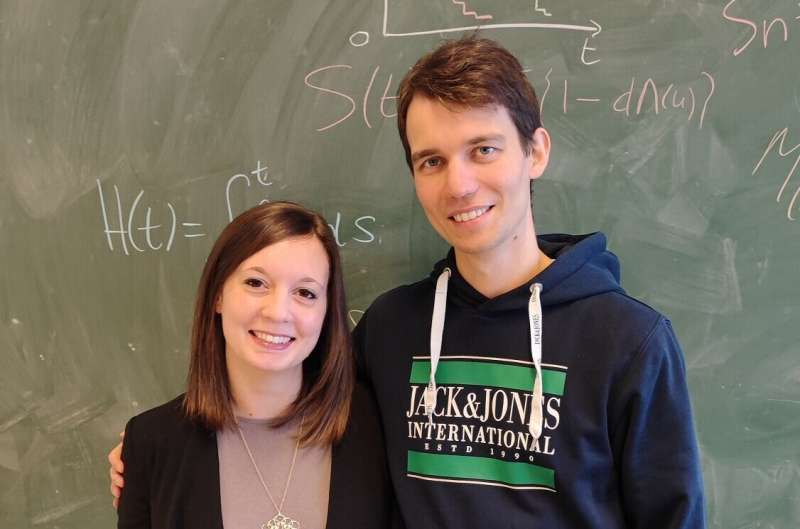This article has been reviewed according to Science X's editorial process and policies. Editors have highlighted the following attributes while ensuring the content's credibility:
fact-checked
trusted source
proofread
Researchers turn mathematical models into health care solutions

Two Leiden researchers have demonstrated how mathematics can improve our health care. Daniel Gomon has developed a model that contributes to the quality of care in hospitals. Marta Spreafico works on an app that helps physicians make well-informed decisions about the treatment of a certain type of cancer. "It's great when statistical models can be applied to medical problems."
Mathematics might seem abstract and theoretical to some. But it often forms the basis for solutions to everyday problems. Health care is such an example. Over the past year, Daniel Gomon and Marta Spreafico of the Mathematical Institute have each worked on applications for the medical field, bridging the gap between math and health care.
Gomon, a Ph.D. candidate, created a model to improve how the quality of hospitals is being monitored. "If a hospital is underperforming," he says, 'they want to find that out as soon as possible so they can intervene."
Real-life monitoring of quality of care in hospitals
Older models typically look at the number of patients that survive the first year after surgery. Gomon says, "But that means a lot of information is ignored. Like, how was the quality of life during that period? And what about the patients that died a year and a day after surgery, and are not included?"
To tackle these imperfections, Gomon upgraded an existing control chart, called a cumulative sum chart (CUSUM), to incorporate all available information. He also programmed it to update the results on continuously, which makes it possible to detect a decline in the quality of care in real time.
From a mathematical model to an app that is easy to use
Spreafico, a postdoc, is also concerned with modeling medical problems using a mathematical approach. Her research is based on an app called PERSARC that is being used in the treatment of severe cases of soft tissue sarcoma, a type of cancer that originates in the body's soft tissues such as muscles. The app, developed by her predecessors, translates mathematical models into a support tool for physicians.
It works rather straightforwardly: one enters data about the patient and the tumor, such as the size and depth. The model then computes the chances of the patient's survival three, five and ten years after the surgery, with or without treatments such as radiotherapy and chemotherapy.
Calculating benefits versus toxicity and side effects
"It helps the physician to make an informed decision," Spreafico explains. "For example: if the probability of survival is very high, it might not make sense to treat the patient with chemotherapy because of the toxicity and the side effects. A treatment with fewer side effects is probably sufficient. If the survival chances after five years are lower than, say, 66 percent, a similar treatment might be very beneficial."
To make the calculation, the model has been fed with a collection of international data about patients with soft tissue sarcoma. Spreafico does point out that in the end, the outcome will always be the result of a discussion between the physician and the patient, as personal preferences play an important role.
More than just proven optimal
Both Gomon and Spreafico emphasize the importance of translating statistical models into real-life applications. "It's great when statistical models can be applied to medical problems," Spreafico says. She has worked on medical data since her master's thesis. Gomon agrees, "It's very important for me that these models are not just proven optimal in a theoretical sense but also used in reality."
Both their applications offer practical solutions for the medical sector. Gomon's model is publicly available for hospitals that want to update the way they monitor their quality of care. The PERSARC app is available online, and Spreafico is in touch with multiple medical centers to provide them with a tailor-made version.




















